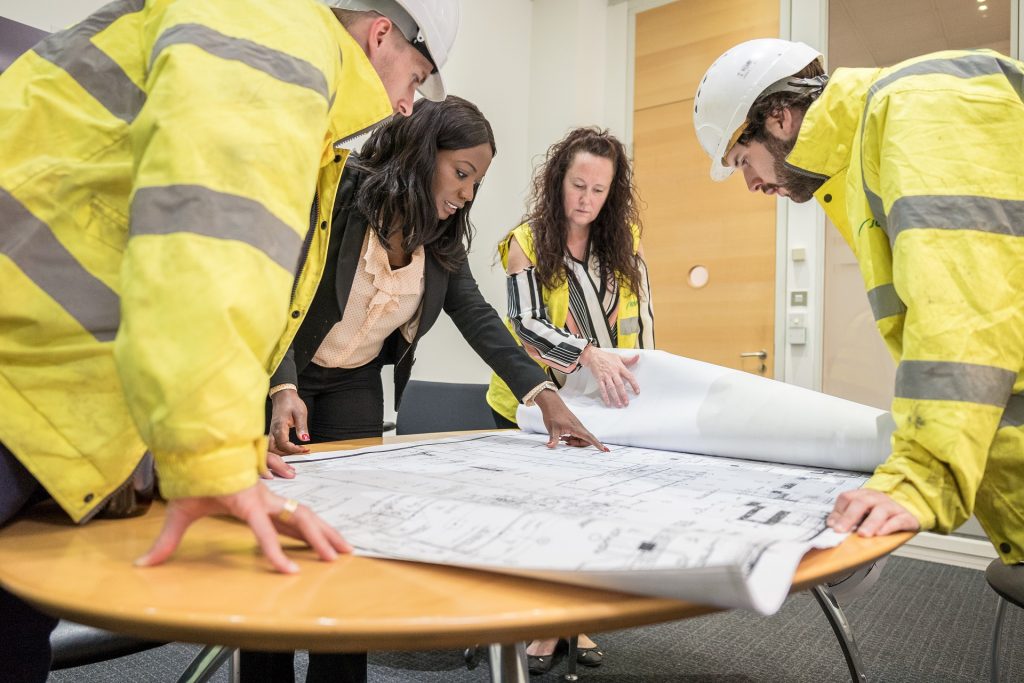A desk study report (or Phase 1 or Preliminary Risk Assessment) is the first stage in the process of assessing land contamination risks. Its purpose is to identify the potential for land contamination to be present on the site, or in the site’s vicinity; and assess the potential for harm to occur as a result of such contamination being present, via development of a Conceptual Site Model.
A desk study report puts a site into its wider environmental context, determining whether the land is suitable (or can be made suitable) for the proposed development.
The components of a desk study report
Although it isn’t always a planning requirement to carry out a desk study report, it is highly recommended to do so, because it can uncover vital information that could potentially make a huge difference to the final length and cost of a project. Essentially the report is a preliminary risk assessment, identifying the nature and extent of any issues such as contamination at an early stage, and enabling the project management team to plot their budgets and schedules more accurately.
A desk study report is a standard, precautionary measure that can provide reassurance for investors or meet conditions for lenders. It involves gathering information from multiple sources and putting it into a format that can be easily communicated, shared and acted upon.
There are two components of a desk study report:
Data collation – a desk-based review of all published documents and other available resources that are relevant to the site.
Site walkover – a site inspection that builds on the initial information obtained from the data research, identifying and assessing potential ground problems.
We’ll explore these components further in the sections below.
Data collation
This first phase of the desk study report involves finding and reviewing relevant information resources pertaining to the site. Such resources could include:
- Historical and current maps
- Studying aerial photographs
- Gathering information from local authorities and regulatory authorities
- Carrying out database searches
- Establishing the site’s planning history
- Internet search for information pertaining to the site
- Geological and hydrogeological maps
- Historical borehole records
- Topographical maps
- Researching any pollution incidents relating to the site
Site walkover
A walkover or site reconnaissance is undertaken to observe the general condition of the site. The aim is to identify anything that might pose a risk or hindrance to the project, such as:
- Distressed vegetation
- Discoloured soil
- Other visible signs of ground contamination
- Polluted water
- Odours
- The presence of waste materials
- Protected or invasive species
- Type and condition of surfaces
- Type and condition of visible structures
- Location of visible utilities
- Surrounding land use
- Evidence of historical uses of the site and land in the vicinity of the site
- Topography of the site and the surrounding area
- Physical constraints on access for site investigation
Types of issues that might be revealed
There are many different issues that can potentially be flagged up during the desk study report stage. These can be broadly categorised as follows:
Land Contamination issues – for example, potential sources of ground contamination or hazardous waste materials such as asbestos has been identified.
Site safety and access issues – there may be significant ground instability due to previous use (eg mining or landfill), or perhaps there are obstructions (eg buried structures) that might affect access to and around the site.
Environmental issues – the presence of any protected flora or fauna species (or any invasive vegetation) would need to be taken into account at an early stage of project planning.
All of these sorts of issues will be detailed in the desk study report, to be addressed and/or investigated further during the next stages of the project, starting with a Phase 2 Ground Investigation Report.
If the desk study report concludes that there are no significant risks of these kinds associated with the site, then no further investigation is recommended.
Our approach
Jomas Associates can provide expert advice and solutions at all stages of development work. We have produced desk study reports for many sites across the UK, with a 100% success rate in achieving regulatory approval to date. Please refer to our list of projects for an idea of the scope of our work, as well as testimonials from some of our satisfied clients.
We have a meticulous understanding of the regulatory frameworks and requirements that guide our industry, and a highly experienced team ready to support our clients professionally and efficiently through the phased risk assessment process.
If you’d like to discuss your project, and find out more about our high-quality services and competitive rates, please contact us.



